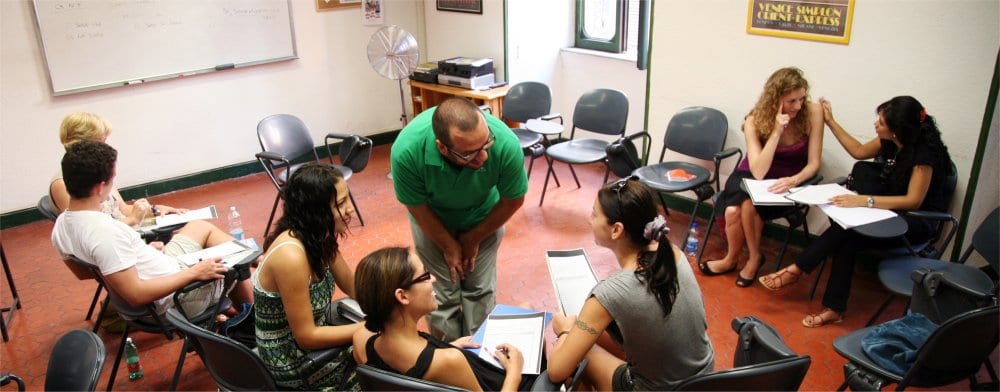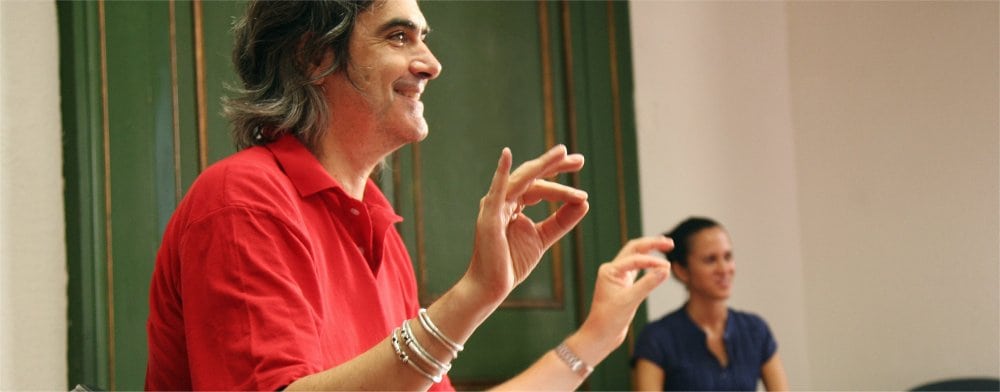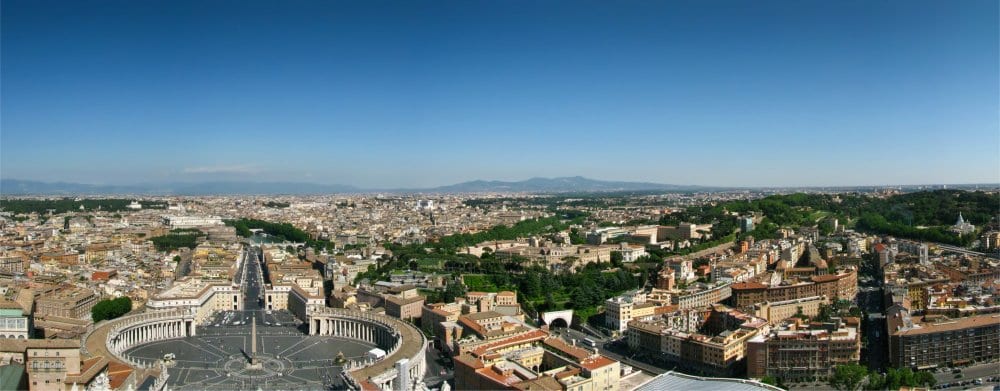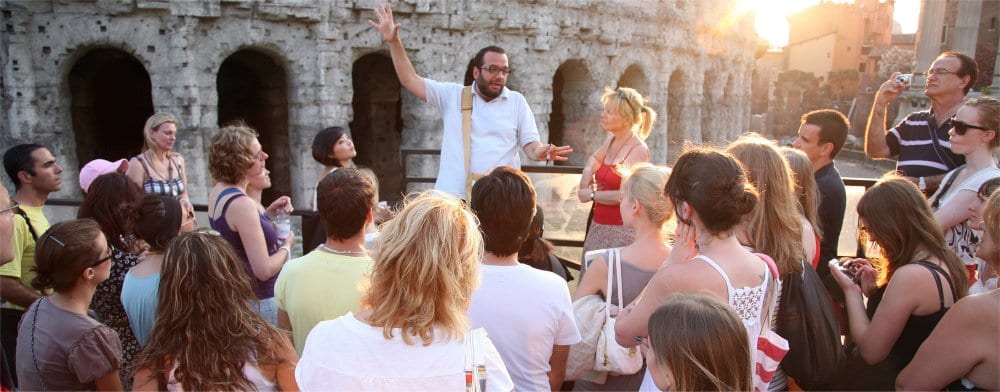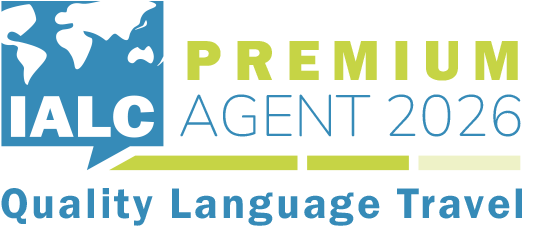Learn Italian in Rome: Language Courses
Languages for Life Course 8 wks+
| Levels offered Minimum age Course duration Number of lessons Lesson duration Maximum per class |
Beginner to Advanced 16 8 to 48 weeks 20 group lessons per week 45 minutes 14 students |
- Timetable: 9:00 am – 12:15 pm (alternative timetables may also apply)
A long term Italian language course in Rome, ideal for Gap Year, post Uni or adult students looking to learn Italian in depth over two, three or more months for true linguistic impact and progress. Check out the Italian Teaching details to understand the philosophy and course structure of the language school. Students can follow a structured Italian course from eight weeks up to a full year to gain maximum fluency (48 weeks courses are very good value for money, as they don’t include any cultural classes).
Languages for Life: 8 to 23 weeks duration
Get a Quote nowLanguages for Life: 24 to 48 weeks duration
Get a Quote now
Academic Year Course 32 wks
| Levels offered Minimum age Course duration Number of lessons Additional classes Lesson duration Maximum per class |
Beginner to High Intermediate 16 32 weeks 20 group lessons per week Cultural & Exam preparation 45 minutes 14 students |
- Timetable: 9:00 am – 12:15 pm (alternative timetables may also apply)
- Set start dates during the year
These long term Italian language courses are the perfect solution for Gap Year students, graduates and adults looking to take a serious career break. A term Italian course allowing students to focus on all aspects of Italian and placing the language in a cultural context + leading to recognised Italian language exams. All lessons are held in the Italian language school in Rome (or in nearby Art studios etc), over several months. In-depth learning over an extended period ensures better mastery, subtler understanding and far greater long term retention of key language skills.
Get a Quote now
Standard Course 1 wk+
| Levels offered Minimum age Course duration Number of lessons Lesson duration Maximum per class |
Beginner to Advanced 16 1 to 8 weeks 20 group lessons per week 45 minutes 14 students |
- Timetable: 9:00 am – 12:15 pm (alternative timetables may also apply)
Open to all language levels (but specific start dates offered for beginners/false beginners) these courses concentrate on developing general language skills (speaking, listening, reading and writing) and are always held in Italian. These short term Italian language courses are aimed at those who need to build on current skills or who want to learn Italian in Rome, from scratch on an Italian immersion course. Further information can be found in the Italian Teaching details.
Get a Quote nowIntensive Course 1 wk+
| Levels offered Minimum age Course duration Number of lessons Lesson duration Maximum per class |
Beginner to Advanced 16 1+ weeks 30 group lessons per week 45 minutes 14 students |
- Timetable: 9:00 am – 12:15 pm (alternative timetables may also apply)
- Plus additional 10 lessons (Monday to Friday)
Follow the Standard Italian course in Rome, and build on this with additional study each week. The extra lessons generally concentrate on oral discussions/debates to ensure students hone conversational skills and give additional opportunity to put their Italian into practise.
Get a Quote now
Combined Course 1 wk+
| Levels offered Minimum age Course duration Number of lessons Additional classes Lesson duration Maximum per class |
Beginner to Advanced 16 1+ weeks 20 group lessons per week + 5 or 10 private lessons per week 45 minutes 14 students |
- Timetable: 9:00 am – 12:15 pm (alternative timetables may also apply)
- Plus additional 10 lessons (Monday to Friday)
Combine the benefits of the group dynamic of the Standard Italian language course in Rome, with the personal attention of private tuition. The programme is ideal for those who relish the individual attention of the private classes with a personal tutor, but don’t want or need to book private tuition classes alone. An excellent way to work on general language skills and address personal needs at the same time.
Combined Course: 20 group + 5 private lessons
Get a Quote nowCombined Course: 20 group + 10 private lessons
Get a Quote now
Professional Combined Course 1 wk+
| Levels offered Minimum age Course duration Number of lessons Additional classes Lesson duration Maximum per class |
Beginner to Advanced 16 1+ weeks 20 group lessons per week + 10 private lessons per week 45 minutes 14 students |
- Timetable: 9:00 am – 12:15 pm (alternative timetables may also apply)
- Plus additional 10 lessons (Monday to Friday)
A short term Italian language course aimed at those who want the combined study experience of the camaraderie of the group course and the individual attention of the private classes with a personal tutor. If offers particular emphasis on specialised fields such as Italian for Lawyers or Italian for Medical personnel etc. Students must have Intermediate level Italian to cover specialised areas in private lessons.
Get a Quote now
Over 50 Course 1 or 2 wks
| Levels offered Minimum age Course duration Number of lessons Additional classes Lesson duration Maximum per class |
Beginner to Advanced 50 1 or 2 weeks 20 group lessons per week Activities and excursions 45 minutes 14 students |
- Timetable: 9:00 am – 12:15 pm (alternative timetables may also apply)
- Group lessons follow the Standard Course format
- Set start dates are offered
- In the morning you will take part in the Italian language group lessons according to your language level
- Open to students aged 50 yrs +
- In the afternoon or evening you will enjoy cultural activities suggested by the school.
- Programme itinerary is subject to change
1st week: afternoon programme
Guided tour of ancient Rome
Visit of famous historical sites (Coliseum, Palantine Hill, Forum Romanum, etc.)
Special dinner in Ancient Rome
Guided visit of the Vatican Museums
2nd week: afternoon programme
The program of the One-Week-Course is followed by:
One day field trip to “Frascati’s” vineyards and its historical and artistic centre with lunch in a typical ‘fraschetta’
Visit of ‘Porta Portese’ Flea Market and Farmer’s Market
Sunset visit of the Jewish ghetto
Guided shopping “From the Market to the Table”
Visit of Art Galleries
The Language of Opera 2 wks
| Levels offered Minimum age Course duration Number of lessons Additional classes Lesson duration Maximum per class |
Intermediate+ 16 2 weeks 20 group lessons per week + 10 private lessons per week 45 minutes 14 students |
- Timetable: 9:00 am – 12:15 pm (alternative timetables may also apply)
In the private lessons students are given a detailed explanation of the professional language and culture surrounding the world of Opera. A short-term Italian language course aimed at those who want the combined learning experience of the camaraderie of the group course and the individual attention of the private classes with a personal tutor.
NB: Students below intermediate level must attend an Italian Standard/Languages for Life course before enrolling on this course.
Dates: every 2 weeks
Duration: 2 weeks, can be extended
Description: The Language of the Libretti course has a duration of two weeks and consists of four lessons in a intensive language course plus two private tutorials on the professional field of the language of the Opera, each day.
Mini Group Course 2+ wks
| Levels offered Minimum age Course duration Number of lessons Lesson duration Maximum per class |
Beginner to Advanced 16 2 to 6 weeks 30 group lessons per week 45 minutes 5 students |
- Timetable: 9:00 am – 12:15 pm (alternative timetables may also apply)
- Plus additional 10 lessons (Monday to Friday)
This is a concentrated, fast paced small group Italian language course aimed at those who require rapid results from their studies in Rome. Should there only be one student at a particular level, the lesson format is altered to the Italian Combined course format.
Get a Quote now
Private Tuition 1 wk+
| Levels offered Minimum age Course duration Number of lessons Lesson duration Maximum per class |
Beginner to Advanced 16 1+ weeks 15+ private lessons per week 45 minutes 1 student |
- Timetable: Generally, afternoon classes are offered (alternative timetables may also apply)
An extremely intensive Italian language course, ideal for those who wish to make maximum language progress over a one or two+ week period. Aimed at adults with business needs or those who need to work on their Italian for academic or professional reasons and for whom time is of the essence.
Get a Quote now
Italian Exam Preparation 4 wks
| Levels offered Minimum age Course duration Number of lessons Additional classes Lesson duration Maximum per class |
Elementary to Advanced 16 4 weeks 20 group lessons per week + 5 or 10 exam prep lessons per week 45 minutes 14 students |
- Timetable: 9:00 am – 12:15 pm (alternative timetables may also apply)
- 10 exam prep lessons if 3 to 12 students per week
- 5 exam prep lessons if 2 students per week
- Minimum 2 students required for this programme to run
- DELI (elementary level)
- DILI (intermediate level)
- DILC (intermediate/business level)
- DALI (advanced level)
- DALC (advanced/business level)
Students are welcome to follow a long-term Italian language course prior to the four-week specific Italian exam preparation course leading to the exams themselves. The final four-week session consists of the Standard Course plus an additional 10 lessons per week of mock tests, strategy discussion and exam drills.
Get a Quote now
Cultural Programmes
The Italian language school in Rome offers a great range of cultural programmes that any student (with some prior Italian knowledge) can join, once in Italy. The cookery and wine tasting courses are particularly popular and recommended by past CESA students!
Cultural Programmes: Offered ONLY in addition to the Italian courses
- Italian History of Art Course
The History of Italian Art course in Rome will enable you to understand its history and social background. The course is designed to show, by means of slides and guided visits, the development of art in Italy in relation to the rest of Europe and offers you an introduction to the most important artistic styles (Romanesque, Renaissance, Baroque, Rationalism and Modern). You will become acquainted with the most important works of artists such as Raphael, Michelangelo, Bernini, Borromini and Caravaggio while learning about the most significant historical and social events that accompanied them.
The program foresees the following subjects:
Introduction:
ROME – the Eternal City
Ancient Rome:
the Forum Romanum (Foro Romano); the Palatine (Palatino); the Imperial Forums; the Colosseum; the Capitol.
Medieval Rome:
Trastevere; Santa Maria in Trastevere; Basilica Santa Cecilia; Santa Maria in Cosmedin and la “Bocca della verità”; San Clemente.
The Vatican city:
St. Peter’s; St. Peters square; the Vatican Museums.
Il Barocco:
Gian Lorenzo Bernini – Piazza Navona, elephant Obelisk, S. Maria sopra Minerva; Francesco Borromini – Francesco Borromini’s S. Ivo alla Sapienza; Michelangelo Merisi da Caravaggio – San Luigi dei Francesi, Sant’Agostino and Santa Maria del Popolo; Galleria Borghese.
Rome’s Rationalism District:
EUR.
Contemporary Rome:
the Ara Pacis; the Auditorium.
To spend a vacation in Rome means being in contact with history, art and a wide variety of cultural phenomena.
The History of Art in Rome course is an opportunity to get to know the city of Rome throughout the course of its historical and artistic evolution. We start with the classical era, exploring it through the texts of ancient writers and the direct experience of monuments which have survived the passage of centuries. We then move onto Christianity, which had its early development in this city, via the works of sacred art found in local churches and convents. We will then acquire an appreciation for the whimsical Baroque and Rococo masterpieces that decorate the piazzas and streets. We’ll conclude with works of art and architecture of the period after 1870, when Rome became the capital of Italy.
The History of Art in Rome course consists of classroom sessions as well as on-site visits across the city. The syllabus is constructed as a series of interlocking journeys of discovery. The course begins in the classroom, using texts, slides, illustrations and maps to introduce the origins of the history of Rome and its development through time.
Rome from its beginnings to the Empire:
Our focus is on major monuments of classical antiquity, such as the Roman forum complex, the Colosseum and the Pantheon, which trace both the political and cultural evolution of Rome from the period of the Republic to that of the Empire.
Early Christian and Medieval Rome (4th – 13th centuries):
We explore the churches and convents which gave visual form to Christian spirituality in their architecture, mosaics, frescoes and altarpieces by such masters as Cavallini, Torriti, Rusuti, etc.
Renaissance Rome (15th-16th centuries):
We experience the world-renowned masterpieces of Michelangelo, Raphael and Bramante in churches and palaces such as the Vatican basilica and Villa Farnesina, as well as innovative urban spaces like the Capitoline piazza and the Via Giulia.
Baroque Rome (17th-18th centuries):
Our topic is the triumph of fantasy in the fountains, palaces and churches of Bernini and Borromini and their successors, with particular emphasis on the areas of Piazza Navona, Piazza Quirinale and the Spanish Steps.
Rome the Capital (1870) and Fascist Rome:
We investigate the period in which Rome was transformed into a modern capital by the Savoy monarchy, which commissioned wide avenues and enclosed piazzas. Later, with Mussolini, Rome regained its central role as the symbol of classical culture, as seen in the EUR quarter and the Italico Forum.
- Italian Cookery
A great favourite with past CESA students. Prepare and cook a complete menu of typical Italian dishes, finish by eating the food together with the other students! Elementary Italian required.
The course is based one meeting of approx. 3 hours a week and shaped for all potential participants, also for the novice who is interested in learning about cooking. During each lesson the students prepare and cook a different complete menu which consists of typical dishes of Italian cuisine in the tradition of genuine simplicity. At the beginning of each lesson the teacher explains the menu of the day and distributes the work. During the preparation and the cooking of the food, the teacher demonstrates, explains and gives valuable hints and tips. The students prepare the table and dine together. Each student or pair of students presents and serves to the others the dish they have prepared. This course is organized in such a way that the students can experience with their own hands the way of cooking in the Italian style. Participants receive a recipe book including a vocabulary in several languages.
- Italian Wines
An introduction to Italian wines from across a range of regions plus wine tasting sessions and (when possible) a visit to a nearby vineyard. Elementary Italian required.
During the course there will also be the opportunity to visit a renowned wine bar.
For a better understanding, tables, maps and other visual support materials will be used. Topics such as how to match wine and food together, and comparing Italian wines to foreign wines, will be dealt with.
The topics dealt with by the course are:
how to read the label of a bottle of Italian wine
the classification of Italian wines (house wine or origin label, D.O.C and D.O.C.G.)
the traditional techniques of cultivation, fermentation and ageing used in Italy
wine tasting and terminology
wine production in Italy and its consumption
new developments and non-traditional wines
Tuscan production, the North-West (Piemonte), the North-East (Friuli, South-Tirol, and other regions, particularly in the centre and in the South).
Fine Art Courses & Fashion or Design Courses
Nota bene: Minimum Italian language level required for all : A2.
INTRODUCTION TO DRAWING & PAINTING
The course aims to provide an introduction and basic preparation for those students that have a desire to test their artistic qualities. The course is specially designed for people who are facing the visual arts, drawing and painting for the first time. The course syllabus is divided into two modules, the first module is oriented to the techniques and rules of graphic design (drawing), while the second module deals in greater depth the theory and practice of colour. Although complementary, the two modules can be attended separately. To follow the single module of painting, it is necessary that the student already has basic knowledge of drawing.
Get a Quote now
DRAWING
Free hand Drawing:
The materials for pencil drawing, The types of hatch, See and draw the actual shape of the figures, Copy from the truth, Copy and drawing in the dark
Technical rules of Prints:
Forms, The ‘Chiaroscuro’, The full and empty, Volumes, the drapery, the shadows, China, Ink, Ecoline, Pen, Pastels, Oil, Wax, Charcoal, coloured pencils
PAINTING
Theory and practice of colour, Perspective, Introduction to painting (water colour)
Get a Quote now
HISTORY OF ITALIAN FASHION
The course aims to give an overview on how to do fashion in Italy, by analysing the major components that are making part of it. The main objective of this course is to study all the elements that determine the importance of Italian fashion and define it’s value. Although the students are provided with a brief overview on the history of Italian fashion and the creation of the “pret a portait”, the themes of the course are more focused on the Italian fashion system from the 80’s to the present days.
The great names of Italian fashion such as Armani, Versace, Gucci, Dolce & Gabbana are explored in greater depth. Short History of Italian Fashion; Introduction to the professions of Fashion; Milan, capital of Italian Fashion
Nota bene: Minimum Italian language level required: A2.
Get a Quote now
HISTORY OF ITALIAN DESIGN
This course will enable you to study the history of Italian Design and learn about the influence of Italian design in daily life.
The first decades of the 20th century:
How and why the design had its beginnings in Italy; Furniture among artisans and industry; Futurism as freedom of expression.
The 30s and the 40s:
Between rationalism and autonomy – from Terragni to Ferragamo; Changes in style of a nation living under a fascist regime.
The 50s:
Italian design is born – awards and recognition.
The 60s:
Plastic – the exuberance of forms and colours.
The 70s:
Great recognition for aesthetics and technology.
The 80s:
Post-modern – contemporary classical style; Abstraction and new colourings.
The 90s:
Influence and clash of Italian design in daily life.
Please note: Minimum Italian language level required: A2
Get a Quote now